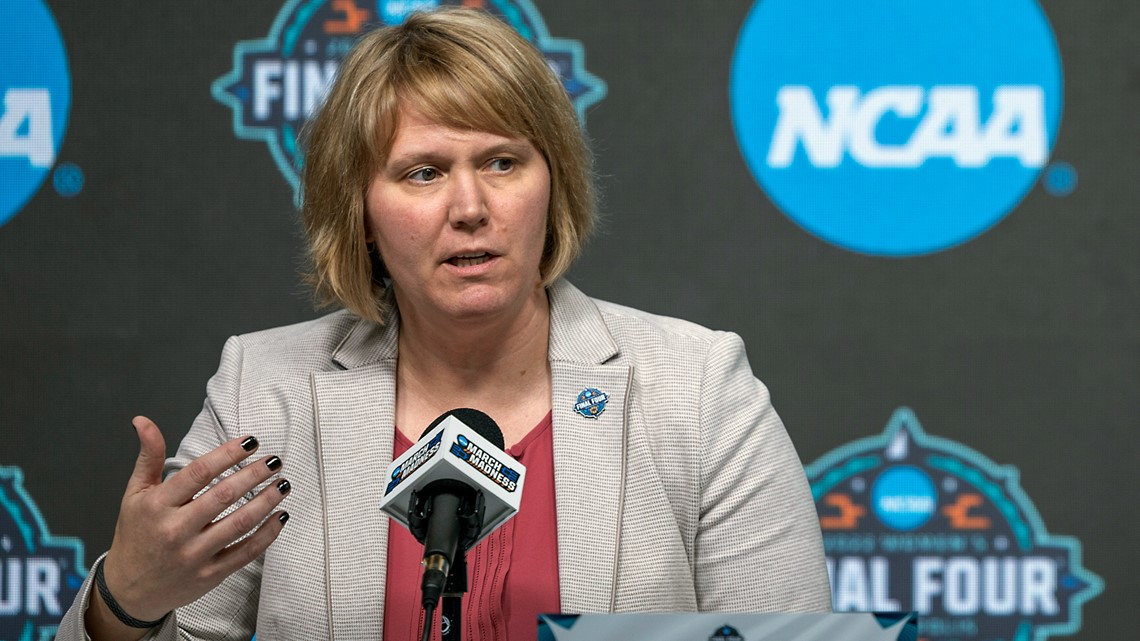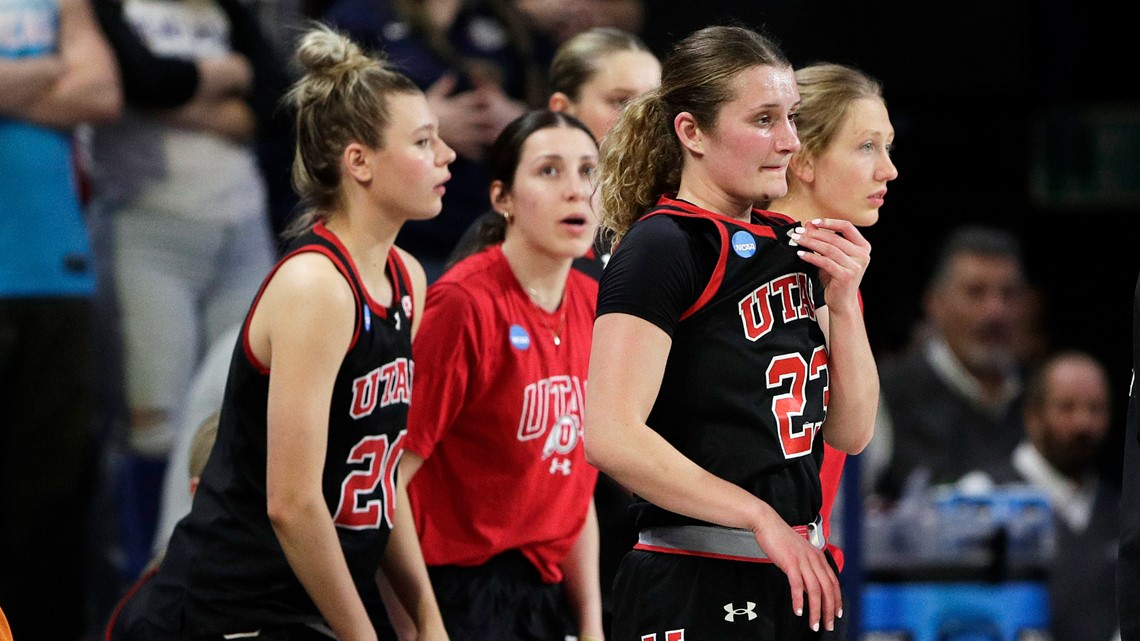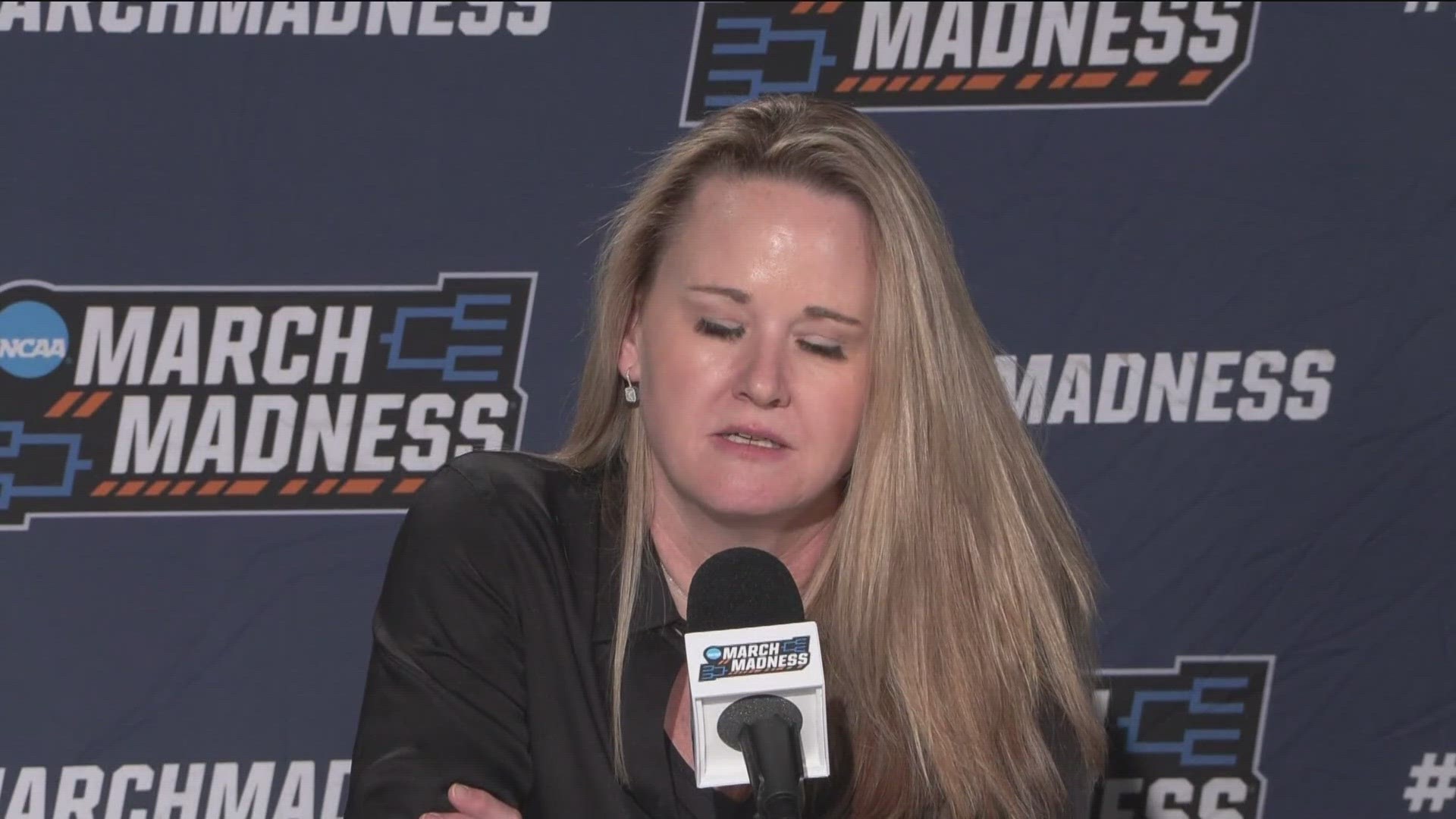COEUR D'ALENE, Idaho — The NCAA women's basketball tournament has so far been the most successful it has ever been when it comes to viewership and attendance, driven by crowds flocking to see their teams play first- and second-round games at home in hopes of advancing to the Sweet 16.
An ugly incident involving the Utah women's basketball team last week has raised questions about how the NCAA selects those early-round sites, which are not locked in until Selection Sunday while the men's sites — at neutral locations — are chosen years in advance.
The Utes players and their traveling party faced racism near their hotel in Idaho and ultimately changed locations. The team was staying in Idaho, 30 miles away from their game site, because of lack of hotel availability in Spokane, Washington.
NCAA Vice President for Women’s Basketball Lynn Holzman spoke with The Associated Press about the logistics and whether changes could be in store.
Why are the first two rounds played at campus sites?
The NCAA has tried a few different formats for the opening rounds of the tournament and the most successful has been the current one where the top 16 seeds host games. The NCAA went to that format in 2015 after having pre-determined sites at schools for the first two rounds before that.
The format has seen a huge rise in attendance the past three seasons after COVID-19 restrictions were lifted, mirroring increased interest in the game, and it rewards the top teams for their regular-season performance.
“Home sites are a great reward for teams that have earned them throughout the season, and the prospect of hosting really ignites the local fan bases as they try and earn the host site," said North Carolina coach Courtney Banghart, who is president of the Women's Basketball Coaches Association. "But, this is only true if the seeding all the way through the 64 is right, based on the team and its qualifications, and never on geographical location.”
This year, there was a record 292,456 fans in attendance for the first two rounds, shattering the previous mark by over 60,000 set last season.
“We saw a 27% increase of attendance,” Holzman said. “There were several sellouts in the first and second round and the secondary market demand was reflective of that increase.”
Viewership also had record numbers for the first and second rounds. The first round was up over 83% from last year and the second round had a 121% increase from 2023. An average of 1.5 million viewers watched the second round according to ESPN.
Would the NCAA consider changing site selection?
Holzman told the AP that the selection committee was slated to review the championship format after the 2025 tournament. She has been pushing for some time to move the review up to this year.
“That review would include the first four, first and second rounds and also an evaluation of the two-site regional format,” Holzman said. “We want to look at the preliminary rounds of the championship and with the growth we’ve had the last few years I think we should move up that review to start in 2024.”


The NCAA thought the switch last season to two regional sites worked well and expects this year's sites — in Albany, New York and Portland, Oregon — to continue that.
Can the women's early-round sites be locked in earlier?
Holzman said the bid process to host the opening two rounds starts in July and goes into the fall. This past year, 40 schools were considered, with an eye toward which teams could crack the top 16 seeds chosen by the NCAA selection committee.
“Teams drop off on their own accord,” she said. “When we get into Selection Sunday there are 20-25 bids that are completely ready and sitting there in case they get the top seed. This year we had 27 that we were ready to act on.”
There is a specific requirement around the number of hotels, rooms, the level of service and other important factors.
“We've done everything we can to mitigate circumstances,” Holzman said. “In the real world, unfortunately, despite all the pre-bid work with schools and having a contract, a hotel without knowledge to us violated the terms of the contract and released all the rooms.”
Holzman wouldn't say where this occurred, but that the site was able to get another hotel and it wasn't an issue.
How far is too far?
The NCAA requires host sites to have hotels be within reasonable distance from the venue and approximately a 30-minute drive at the most.
Utah, South Dakota State and UC Irvine were staying at hotels in Idaho, with Gonzaga as the host school, because of a lack of hotel space in the Spokane area. Last weekend, the city was also a host site for first- and second rounds of the men’s NCAA Tournament — a choice made several years ago — and there was also a large youth volleyball tournament in the area.
Gonzaga had arranged for a police escort for the three teams to make the 30-mile drive to the arena from Idaho to cut down on the travel time. The school also arranged for a gym near their hotels for the teams to practice.
Gonzaga wasn't the only place that had teams staying miles from the venue. In Connecticut, some teams stayed in Hartford, which is roughly a 30-minute drive to Storrs without traffic but can take up to an hour on a busy day.


Watch more Sports:
See KTVB sports coverage in our YouTube playlist:
HERE ARE MORE WAYS TO GET NEWS FROM KTVB:
Download the KTVB News Mobile App
Apple iOS: Click here to download
Google Play: Click here to download
Watch news reports for FREE on YouTube: KTVB YouTube channel
Stream Live for FREE on ROKU: Add the channel from the ROKU store or by searching 'KTVB'.
Stream Live for FREE on FIRE TV: Search ‘KTVB’ and click ‘Get’ to download.

